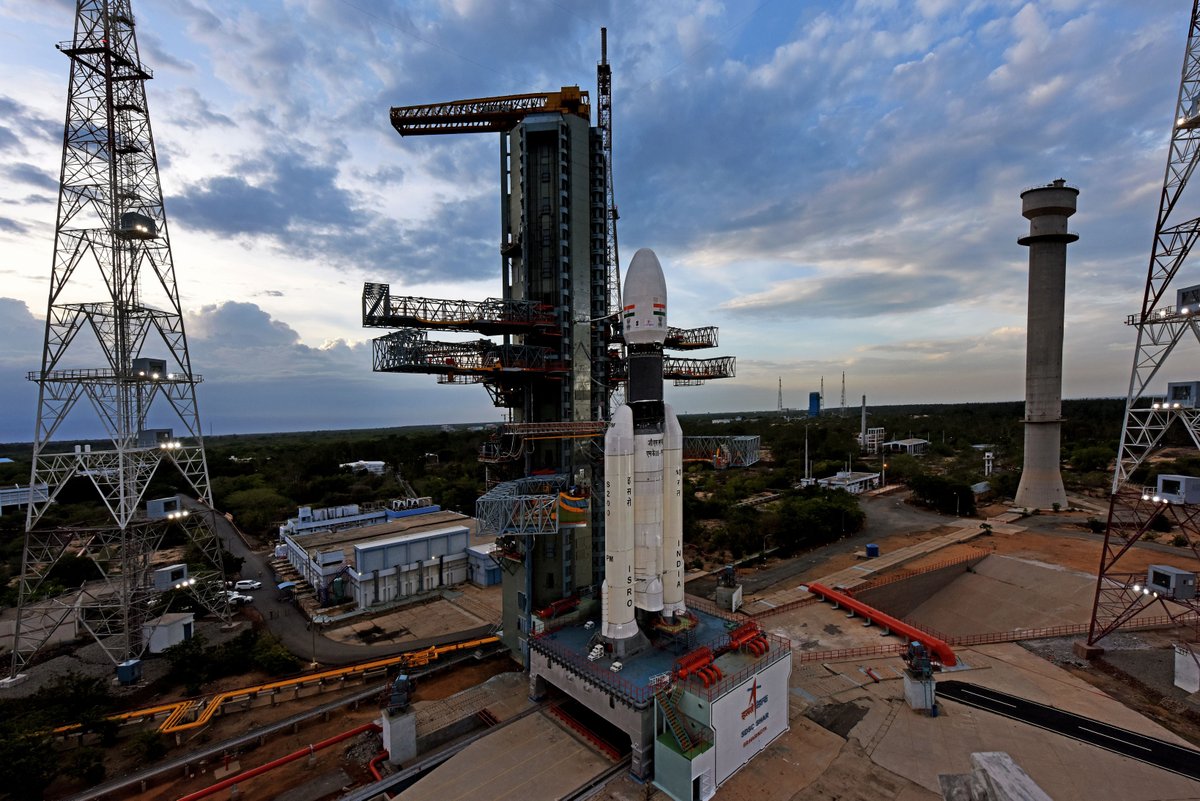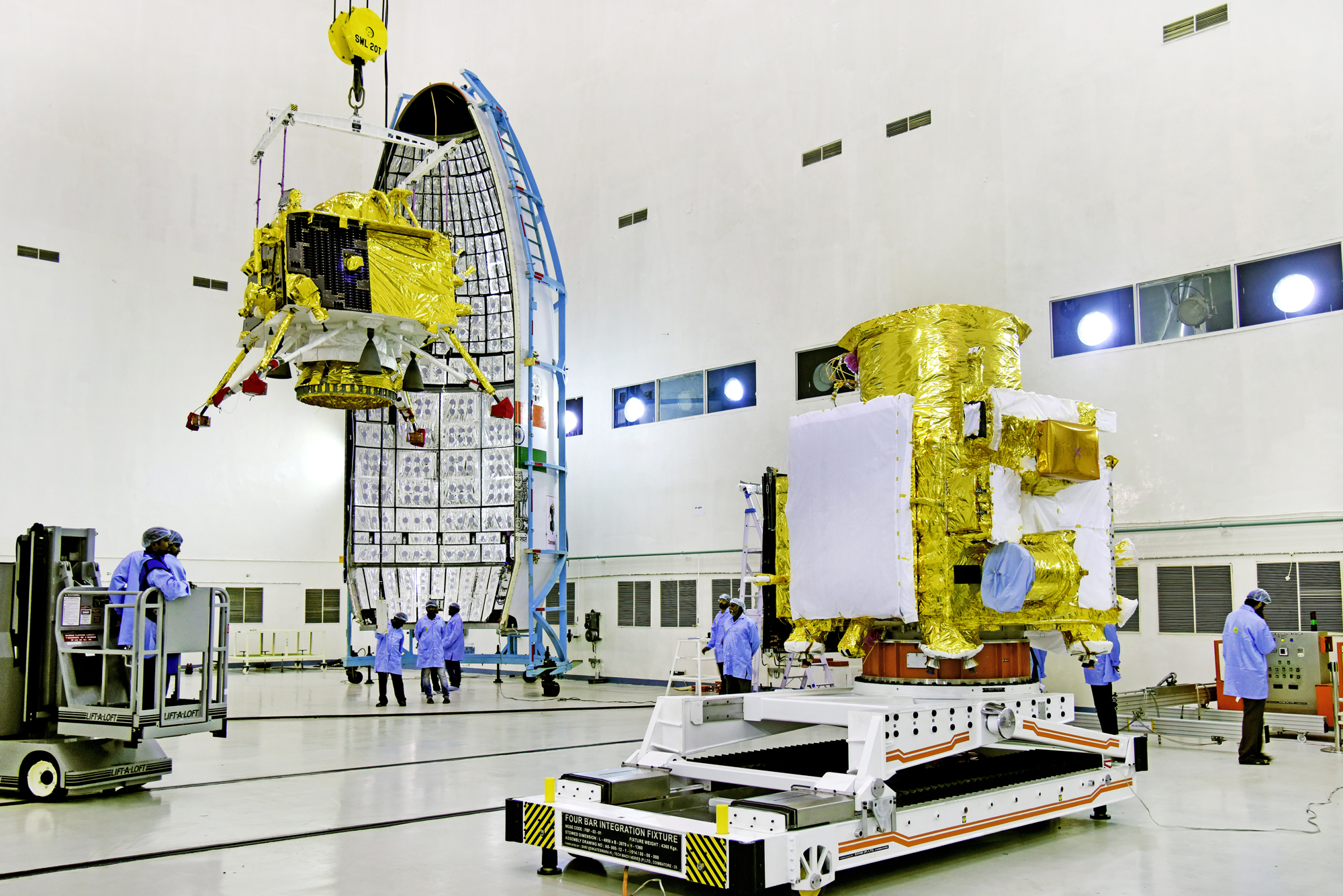India Shoots for the Moon with Ambitious Lunar Launch Today! Watch It Live
Update for 5:12 p.m. EDT: India has called off today's launch attempt of the Chandrayaan-2 moon mission due to a "technical snag." A new launch date wil be announced once it is selected, ISRO officials said.
India is about to launch its most ambitious mission to the moon yet — one that will send an orbiter, lander and rover to the lunar south pole — and you can watch it live today (July 14).
The Indian Space Research Organisation will launch Chandrayaan-2 mission from the Satish Dhawan Space Centre in Sriharikota at 5:21 p.m. EDT (2151 GMT). The local time at liftoff will be 2:51 a.m. July 15. ISRO will webcast the launch live at 5 p.m. EDT (2100 GMT/2:30 a.m. IST) and you'll be able to watch it live on Space.com or directly from the Indian space agency's website.
"ISRO is now embarking on one of the most complex missions since its inception - that of launching Chandrayaan-2," said K. Kasturirangan, former chairman of the ISRO, in a video statement. "I'm sure the country is going to be really proud of what ISRO is doing today."
Related: The Science of India's Audacious Chandrayaan-2 Moon Mission





The $142 million Chandrayaan-2 is a successor to India's first moon mission, Chandrayaan-1, which launched into lunar orbit in 2008 and helped discover the presence of water molecules on the moon.
With Chandrayaan-2, India hopes to go even farther just as NASA celebrates its own 50th anniversary of the Apollo 11 moon landing by astronauts (Apollo 11 launched on July 16, 1969). If successful, Chandrayaan-2 would make India only the fourth country to make a soft landing on the moon, and the first to reach the lunar south pole. The United States, Russia and China have all achieved soft landings, with an Israeli probe crashing into the moon earlier this year.
Breaking space news, the latest updates on rocket launches, skywatching events and more!
Chandrayaan-2 includes three different spacecraft: an orbiter to study the moon from an orbit of 62 miles (100 kilometers), a lander called Vikram and a small rover Pragyan. The trio will use 13 different instruments (including a NASA retroreflector on the lander) to study the moon's south pole, a realm that holds tantalizing promise for future moon exploration because of its supply of water ice in permanently shadowed craters, a potential resource for future astronauts.
NASA, for example, hopes to return astronauts to the moon by 2024, and has listed the moon's south pole as a destination. India, too, has set its sights on the moon with its Gaganyaan program aiming to launch the first ISRO astronauts into space by 2022.
If all goes well with today's launch, Chandrayaan-2 will spend about 16 days orbiting the Earth as it prepares to make the journey to the moon, a trip that is scheduled to take the spacecraft five days once it leaves Earth's orbit.
Once at the moon, Chandrayaan-2 and its sister craft will spend 27 days in lunar orbit before releasing the Vikram lander and its Pragyan rover. India's moon landing day is already set: Sept. 6.
The solar-powered Vikram lander (named to honor the late Indian scientist Vikram Sarabhai, the "Father of the Indian Space Programme") is expected to spend 15 nerve-wracking minutes making its way down to the lunar surface. Its landing site is a region of the moon's south pole between two craters called Manzinus C and Simpelius N, about 70 degrees south of the lunar equator.
Four hours after landing, Vikram will deploy the rover Pragyan (its name is Sanskrit for "wisdom") and the two will spend 14 days (the equivalent of one lunar day) exploring their landing site.
But for all that to work, Chandrayaan-2 has to successfully reach space. That sets the stage for today's launch aboard India's most powerful rocket, the Geosynchronous Satellite Launch Vehicle Mark III M1.
Visit Space.com today at 5 p.m. EDT (2100 GMT) for a webcast of India's Chandrayaan-2 launch!
- The 21 Most Marvelous Moon Missions of All Time
- How NASA Scrambled to Add Science Experiment to India's Moon Probe
- ISRO: The Indian Space Research Organization
Email Tariq Malik at tmalik@space.com or follow him @tariqjmalik. Follow us @Spacedotcom and Facebook.

Tariq is the award-winning Editor-in-Chief of Space.com and joined the team in 2001. He covers human spaceflight, as well as skywatching and entertainment. He became Space.com's Editor-in-Chief in 2019. Before joining Space.com, Tariq was a staff reporter for The Los Angeles Times covering education and city beats in La Habra, Fullerton and Huntington Beach. He's a recipient of the 2022 Harry Kolcum Award for excellence in space reporting and the 2025 Space Pioneer Award from the National Space Society. He is an Eagle Scout and Space Camp alum with journalism degrees from the USC and NYU. You can find Tariq at Space.com and as the co-host to the This Week In Space podcast on the TWiT network. To see his latest project, you can follow Tariq on Twitter @tariqjmalik.
